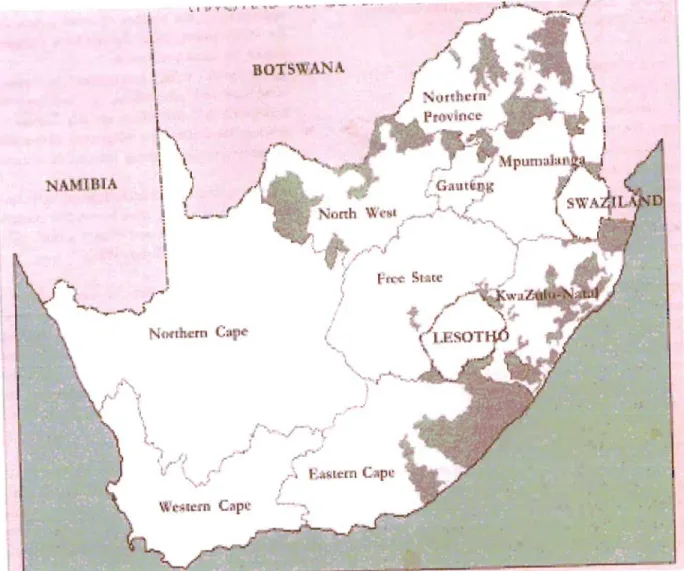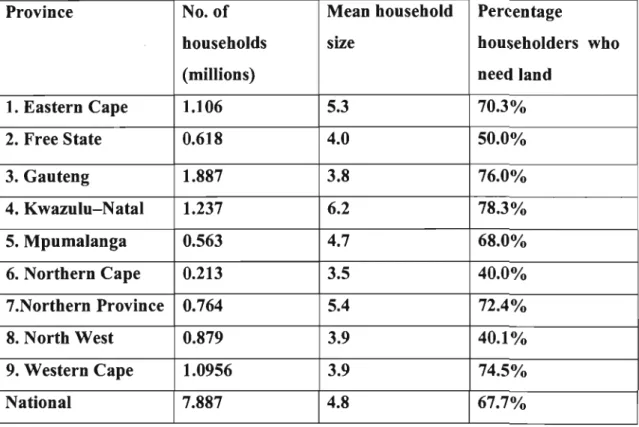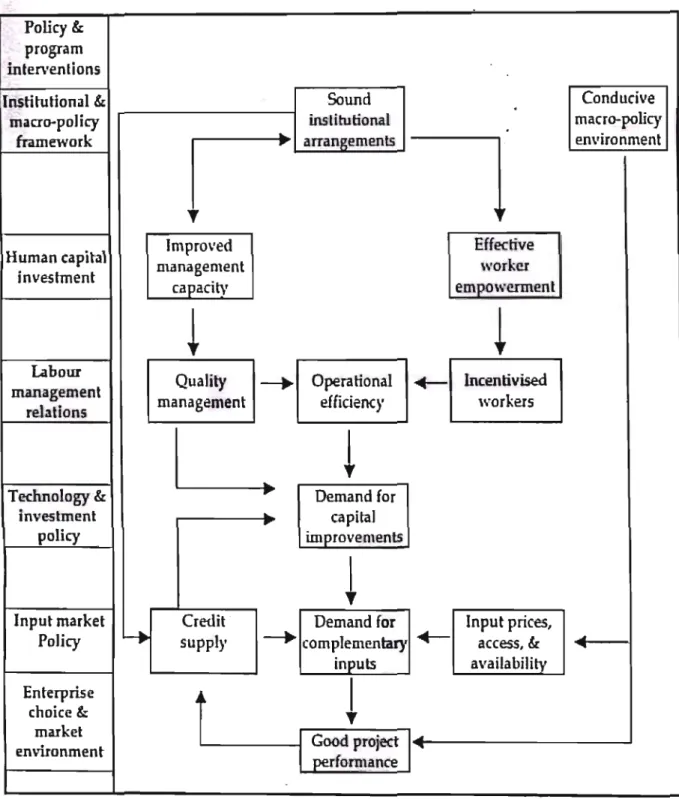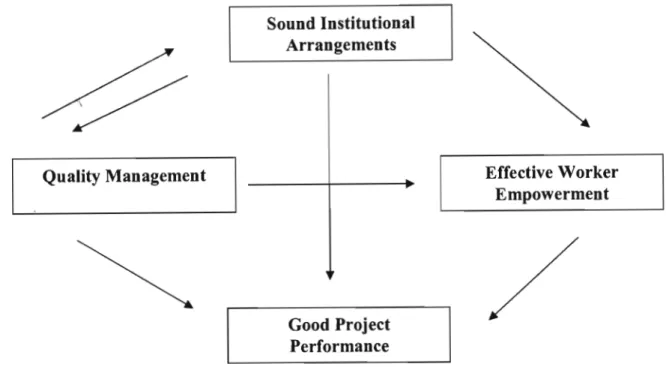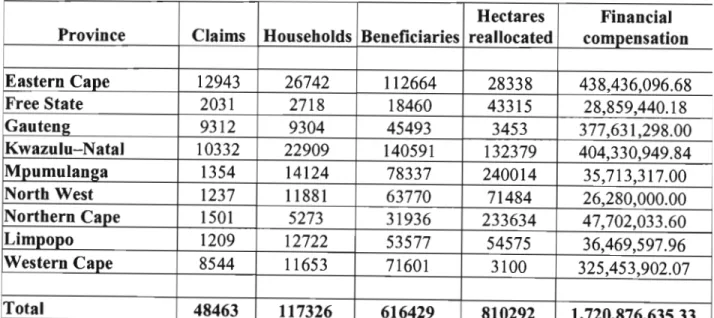Reasons for adopting the market-led approach in South Africa as given by World Bank officials and other experts. Potential sources of risk in the land redistribution program to participating households. This study aims to synthesize the land reform program in South Africa in dozens of its multifaceted political and legal policy origins, arrangements and its implementation, taking into account the international lessons and experiences.
INTRODUCTION
- INTRODUCTION
- DEFINITION OF LAND REFORM AND ASSOCIATED TERMS
- HISTORICAL BASIS FOR LAND REFORM IN SOUTH AFRICA
- THE NEGOTIATED ROOTS OF SOUTH AFRICA'S LAND REFORM
- POVERTY AND LAND NEED IN SOUTH AFRICA
Naturally, land reform was seen as a cornerstone of the transformation process at the dawn of democracy in South Africa. The combination of these three bodies led to the formulation of the RDP and land reform policy.

OBJECTIVES, TYPES OF LAND REFORM AND LESSONS LEARNED WITH RELEV ANT EXAMPLES
- GENERAL OBJECTIVES OF LAND REFORM
- IMPOSED REDISTRIBUTIVE REFORMS
- LAND TENURE REFORM
- MARKET-LED REFORM
- LAND REFORM THROUGH RESTITUTION
- FAO'S LESSONS LEARNED ON LAND REFORM FROM AN INTERNATIONAL PERSPECTIVE
Many states have two or more such land reforms as part of their rural development program package. This type of land reform often arises from a post-crisis situation, such as a war or civil war.
Good governance and the rule of law correlate closely with the successful implementation of the process
After examining the types of land reform processes, it is important to determine the key lessons before moving on to the future challenges. In this regard, Maximiliano Cox and his research team from the F AO Rural Development Division (2003, p.2l- 23) conducted a comprehensive review of land reform experiences around the world from the early 1940s to the present period.
Non-biased macroeconomic policies are crucial to the successful implementation of land reform
CHRISTIANSEN'S LESSONS LEARNED ON REDISTRIBUTIVE LAND REFORM FOR SOUTH AFRICA
To assess the performance of the land conversion program in South Africa (covered in detail in Chapter 4) it is necessary to reflect on the international. In the absence of fast-track programs, a combination of excessive bureaucracy, over-centralization of the process, and legal challenges are likely to render the program ineffective. A careful assessment of the models or livelihood options available to rural households must be undertaken before a restructuring program is implemented.
The models should indicate whether the people settling on the land have sufficient land size and quality to at least provide the intended income. Consensus must be reached across the spectrum of political opinion that the program is both necessary and the most acceptable way to achieve the stated goals. The proposed program should be evaluated in the light of an understanding of the roles that the public sector can and should play, and what is best left to the non-governmental sector.
Programs that have relied entirely on the public sector in the belief that it is the only one capable of maintaining integrity, delivering services, assessing needs and managing the process have been failures. It is in light of these lessons that it is generally accepted that market-supported land redistribution programs tend to outperform those that are administered and. The need to rely on market mechanisms stems from the perceived weaknesses of non-market oriented programs that typically establish too much control in public sector bureaucracies (Kirsten and Van Zyl, 1999, p.328).
LAND REFORM DEVELOPMENT CHALLENGES FOR THE TWENTY-FIRST CENTURY
The redistribution of land is necessary but not sufficient to guarantee the success of a development program. These considerations are necessary to maintain higher productivity after reform and to include others who may not benefit from the direct provision of land. Empirical evidence also suggests that land distribution inequality has increased: in the 1980s and 1990s in sub-Saharan Africa; in Eastern European countries where land reform was dismantled after the collapse of the Soviet Union; and in the 1970s and 1980s in South Asia.
The conclusion of these studies is that the combination of increased aggregate investment and pro-poor land redistribution significantly increases their incomes and is an effective way to reduce poverty and increase economic growth. A major challenge is to cope with the increasing demand for access to land, represented by the growing number of wage-dependent landless workers in particular, and the agricultural workforce in general. Their response is further challenged by fears that they will be disadvantaged in terms of global trade competitiveness, including their efforts to attract much-needed foreign capital.
It should be noted that governments are most likely to meet these challenges if they use the mechanisms at their disposal in a coordinated manner with the aim of increasing synergies between them. This also means the need to integrate land reform into the broader context of economic and social policies aimed at development and poverty. Given the continued importance of the issue, the often heated political debate surrounding it, and the lack of quantitative evidence on some newer approaches, a rigorous, open, and participatory evaluation of current experience is particularly important (Deininger, 2003, p. xl). .
ECONOMIC RATIONALE FOR LAND REFORM IN SOUTH AFRICA
- MARKET-LED LAND REFORM
- PROPERTY RIGHTS AND SECURITY OF TENURE
- PROPERTY RIGHTS-ECONOMIC ASPECTS
- SECURITY OF TENURE
- LAND TENURE IN SOUTH AFRICA
- REDISTRIBUTIVE LAND REFORM
- EQUITY AND EFFICIENCY
- THE FARM-SIZE-EFFICIENCY RELATIONSHIP
- DUALISTIC NATURE OF AGRICULTURE AND LAND REDISTRIBUTION
- THE NEW INSTITUTIONAL ECONOMIC PERSPECTIVE AND FARM WORKER EQUITY-SHARE SCHEMES
- GENERAL CONCLUSIONS
There is a belief that common ownership inevitably results in the decline of ownership due to the inability to control overconsumption by users, as described in the “Tragedy of the Commons” (Hardin, 1968). Customary land tenure systems, which are part of the broader social framework, often protect poor and vulnerable community members. The tribal authority manages and allocates vacant land by virtue of the fact that they rule the tribe.
In economic terms, social justice is related to issues of employment, income distribution, efficiency and size of the internal market (Ellis, 1992, p.199). Politically, social justice means increasing social equality, which lies at the heart of South Africa's democratic transition towards achieving true racial equality. The main dilemma of the land reform program in South Africa is reconciling the historical claims of previously dispossessed blacks and the need to maintain effective crop and livestock production for sale to urban and rural consumers and export markets (Williams, 1996 , p. 148).
The horizon problem is due to residual claims that do not extend as far as the economic life of the underlying asset (Porter and Scully, 1987). The left side of the figure identifies strategic points of policy and program interventions that directly or indirectly affect the business. Based on the study of the nine land reform projects, Knight et al (2003) suggested.
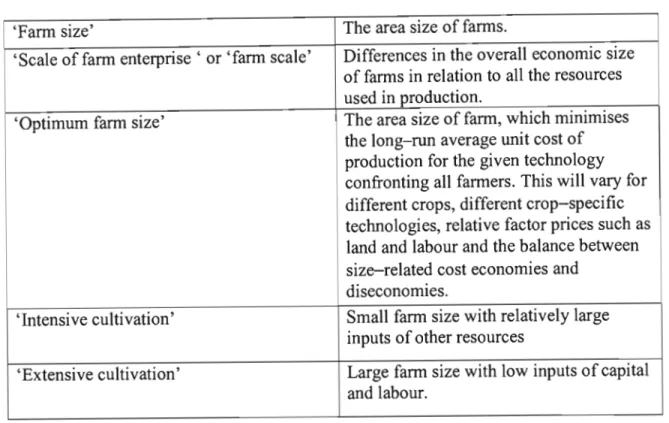
CHAPTER 4 - LAND REFORM IN SOUTH AFRICA
- INTRODUCTION AND BACKGROUND
- ELEMENTS OF THE SOUTH AFRICAN LAND REFORM PROGRAMME
- LAND RESTITUTION
- LAND TENURE REFORM
- LAND REDISTRIBUTION
- THE ROLE OF OTHER STAKEHOLDERS
- NON-GOVERNMENTAL ORGANISATIONS (NGO'S)
- FARMERS' ORGANISATIONS
- THE LAND BANK
- THE LAND REFORM CREDIT FACILITY
- THE LATEST NATIONAL STATISTICS AND DEVELOPMENTS
The restitution program was the most high profile and politically charged component of the land reform policy (De Wet, 1997, p.357). Following the promulgation of the Land Rights Restoration Act, Act 22 of 1994, members of the public were invited to submit land claims. By September, households had received a total of 268,306 hectares - or less than 1 percent of the land available for redistribution.
The objective of the redistribution program is to 'redistribute land to the landless poor, labor tenants, agricultural laborers and rising farmers for housing and. The group formed a legal entity (usually a community land trust or common property association) that was officially registered as the owner of the property. It was organized by officials from the National Department of Agriculture and academics from a South African university.
Most branches have predominantly white members, with the exception of Kwanalu (KwaZulu-Natal branch). Those arrested included the main leadership of the LPM in the province and other activists. Overall, the budget for land reform has increased in the 2004/5 financial year, reaching just under 0.5 percent of the national budget: Rl 4 billion.
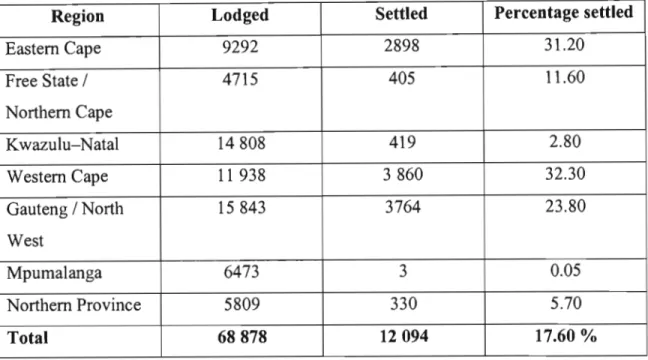
BARRIERS TO PARTICIPATION OF THE POOR IN SOUTH AFRICA'S LAND REFORM PROGRAMME
- THE PROBLEM OF DEFINING A 'COMMUNITY' IN THE SOUTH AFRICAN CONTEXT
- THE MARKET -LED 'WILLING BUYER-WILLING SELLER' APPROACH
- UP-FRONT COSTS
- RISK AVERSION
- HUMAN CAPITAL CONSTRAINTS
- TIME POVERTY
- THE IMPACT OF HIV I AIDS
The following reasons as provided in Table 5.1 are a summary of the justification for the market-led approach for South Africa's Land Redistribution Program as given by World Bank officials and other experts. Demand-oriented targeting has the advantage of maintaining productivity in the agricultural sector, as participation tends to be limited to those who can and indeed should use the land productively (Biswanger and Deininger, 1993). Furthermore, small-scale infrastructure improvements, especially fencing and water supply, will be the responsibility of the land redistribution beneficiaries.
One of the largest upfront costs is the co-payment required due to the demand-driven rationing of program benefits. A very rough, but conservative estimate of the upfront payment for the beneficiaries is therefore approximately R5,400. The inability of the land reform program to budget funds for training in the essential skills of agriculture implies the assumption that beneficiaries already have such skills or will undertake the necessary training themselves.
The poverty alleviation potential of the land reform program depends heavily on the hiring of surplus rural labor. Labor restrictions in former homelands are likely to continue due to the land redistribution program as households will be asked to move to areas with. Poverty and access to basic resources are among the factors exacerbating this epidemic.
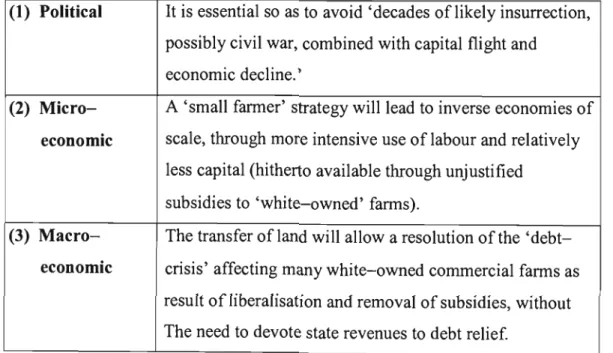
HIV infection
SUMMARY, CONCLUSION AND POLICY RECOMMENDATIONS
- SUMMARY AND CONCLUSION
- POLICY RECOMMENDATIONS
- THE INTERNATIONAL PERSPECTIVE
- FARM WORKER EQUITY-SHARE SCHEMES IN SOUTH AFRICA
- THE SOUTH AFRICAN LAND REFORM EXPERIENCE
- BARRIERS TO PARTICIPATION IN LAND REFORM PROGRAMME IN SOUTH AFRICA
Land reform in South Africa is not simply a redistribution of land from one group of people to another. The purpose of this study was to synthesize the land reform program in South Africa in terms of its multifaceted origins of political and legal policy, regulation and. In 1999, eminent World Bank researchers conducted a comprehensive study (Deininger et al, 1999) of the land reform program in South Africa.
First, the government should conduct a broad situational analysis of the impact of HIV I AIDS on the land reform program. Fourth, donors to the land reform program should be encouraged to invest in the fight against the spread of HIV/AIDS. Unraveling Impendle State Land Redistribution: Prospects and Processes of Land Reform in KwaZulu-Natal, South Africa.
Belville, University of the Western Cape. 1999) The Problem of Defining 'Community': Challenges for the Land Reform Program in Rural South Africa. Minutes of the sixth quarterly meeting of the Land Reform Credit Facility Steering Committee, 22 May 2001. Program for Land and Agricultural Studies (PLAAS), University of the Western Cape. 2003) Land reform and sustainable livelihoods in South Africa's Eastern Cape Province.

